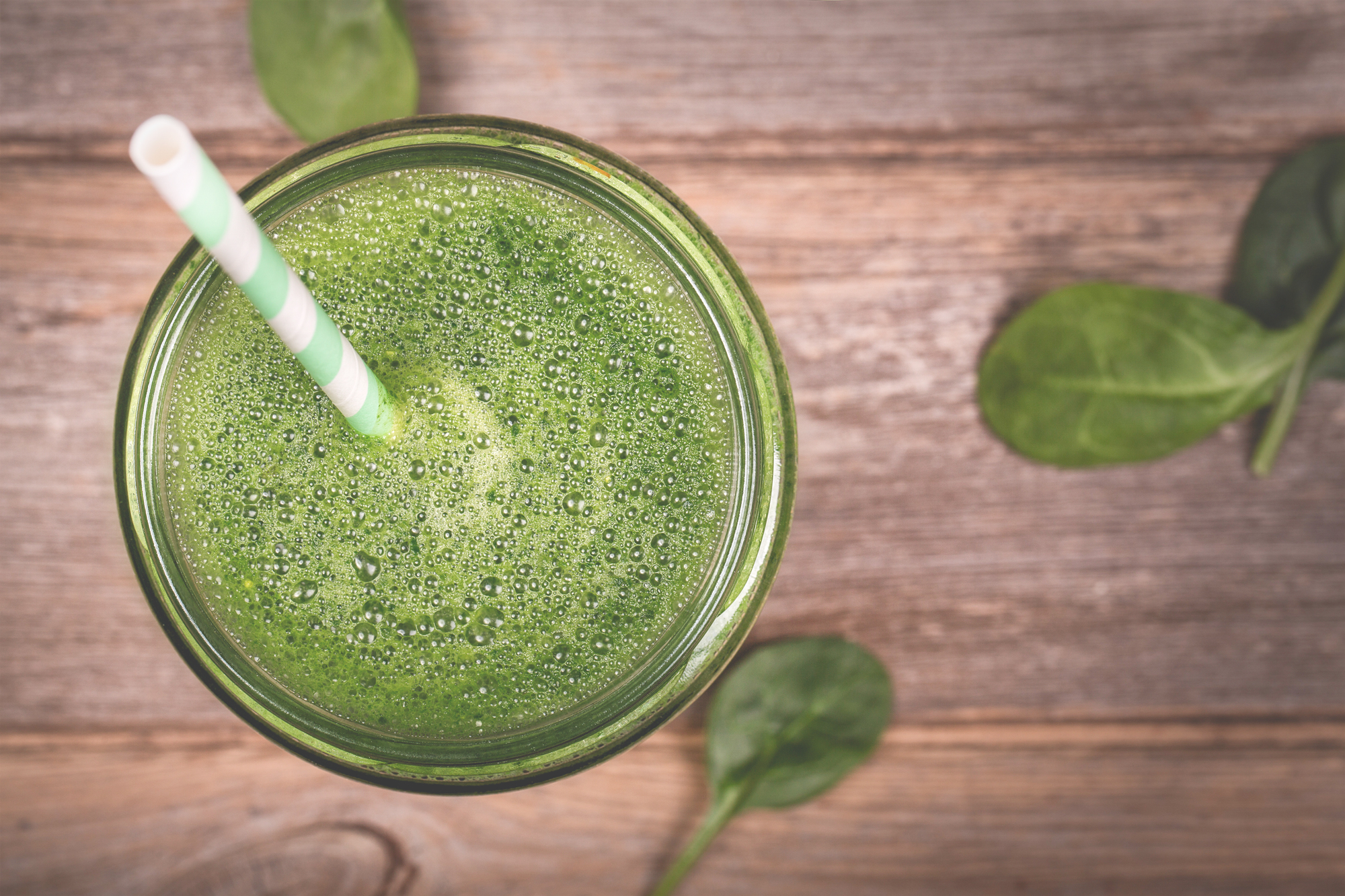With juice bars popping up everywhere, the concept of cleansing and detoxing with a liquid diet has never been more mainstream. Let’s get to know this popular trend and how it really impacts our health.
BY: MASCHA DAVIS, MPH, RDN
Many people believe that juicing is a way to detox, cleanse and purify the body, all while getting a nutrient boost. These are highly popular claims, typically endorsed by celebrities and food companies alike.
But what does the science say and what is the reality behind juicing? Let’s be clear: there is nothing wrong with enjoying some fresh squeezed juice every once in awhile. The danger with juice comes with the mistaken belief that going on a ‘cleanse’ and consuming numerous glasses throughout the day is good for your body; the evidence is clear that the opposite is true.
Let’s take a closer look…
Does my body need to be cleansed?
There is zero research or scientific papers that provide support to the idea that cleansing is happening from juicing. Our body already has a natural detox system: our liver and kidneys.
Won’t I be sick less, true or false?
While it is definitely true that eating a plant-based diet has been shown to lower risk of heart disease and cancer, there is not a lot of research specific to juicing. There is some research on juice and its benefits to the immune system, although the immune system benefits likely come from the general consumption of fruits and vegetables, juiced or whole.
Don’t juices have more available nutrients?
You can certainly derive vitamins and minerals from juicing. But these vitamins and minerals are no more bioavailable in the juice than they are in the whole fruit or vegetable – this is yet another claim propagated by those without a credible scientific background in mainstream media.
In fact, there are phytonutrients inside insoluble fiber (the ‘roughage’ removed during juicing) that interact with vitamins, minerals and antioxidants which make them more active and bioavailable in the body. The vitamin, mineral and antioxidant content of a whole fruit, like an apple, is decreased significantly when you remove the skin. Insoluble fiber has the benefits of promoting bowel regularity, lowering cholesterol, stabilizing blood sugars and helping with weight management. But since insoluble fiber is lost in the juicing process and fruit juice contains a high amount of sugar, blood sugar levels spike more quickly, triggering an insulin response.
In a large-scale Harvard study, drinking juice was shown to increase risk of diabetes by 21%, while eating whole fruits decreased the risk by up to 23%. Juice is known to have a much higher glycemic index than fruit, which is likely the reason juice consumption was linked to increased risk of diabetes. This is due to the fact that the most critical nutrient which helps slow blood sugar spikes, fiber, is present in whole fruits. This allows for a slower, more gradual insulin response and a lower impact on the endocrine system.
Why should I care about fiber?
Let’s talk about fiber for a minute, one of the most important nutrients you can eat. There are two types: soluble and insoluble fiber. Both come from plants and both are forms of carbohydrates. However, fiber is not absorbed by our digestive system. Instead, as it moves through the stomach, intestine and colon it slows digestion and makes your stools softer and easier to pass. An easy way to tell them apart is by observing that soluble fiber absorbs water, turning into a gel-like substance (chia seeds, anyone?) and insoluble fiber does not absorb water – carrots are a good example.
Most fruits and vegetables have both types of fiber, but in different proportions. Apples and blueberries have quite a bit of soluble fiber, which actually binds to excess cholesterol and removes it from the body. Soluble fiber can even help control type 2 diabetes and is great for weight loss because it keeps you feeling full.
Insoluble fiber is mostly found in the skins of fruits (which is why I recommend my clients buy organic fruits and veggies and eat the skin of many fruits and veggies like kiwis, apples, potatoes, pears etc). It also keeps you feel satiated after a meal and helps to bind toxins and excrete them from the body, thus lowering cancer risk.
If you really want to drink your fruits and veggies, smoothies are a great way to get your nutrients because they actually retain their nutritious benefits. The big difference between smoothies and juices is that you typically put the whole fruit or vegetable into the smoothie – thus maintaining its natural composition and keeping all that fabulous fiber. In fact, smoothies DO include some cleansing power because of all of the fiber that’s contained in them!
So….can I drink juice or not?
Most of us can agree that fresh squeezed juice is delicious. A good way to approach it is as a treat – enjoyed on occasion and in moderation. If you love juice, you don’t have to stop drinking it. A good serving size to keep in mind is 4 oz, or half a cup. You could go up to 6-8 oz if it’s mostly green vegetable juice as opposed to fruit, because the sugar content is much lower.
So please feel free to have that glass…just in moderation!
Mascha Davis, MPH, RDN is a Los Angeles-based private practice dietitian who shares her love of health and wellness through a unique global perspective. From world-class U.S. medical centers to rural villages in Africa, Mascha has dedicated herself to traveling the world, spreading her love of healthy living through both her humanitarian work and private practice. Learn more about Mascha at Nomadista Nutrition.

